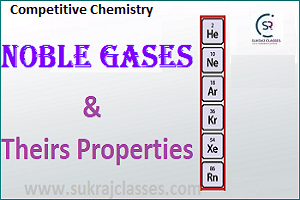
Glasses: Types and Uses – Competitive Chemistry
Concept of – “Glasses: Types and Uses – Competitive Chemistry” is important for all competitive exams like CET- Common eligibility Test, SSC CGL, SSC CHSL, RRB NTPC, UPSC and for other state civil exams. In these exams, almost 4-5 questions are coming from Chemistry. Let’s start the topic on:-
Glasses and Their Prosperities
Glasses:
- Glass is the homogenous mixture of the silicates of various alkaline metals, various metal oxides, mainly Soda (Na2O) and Lime (CaO).
- The glass was firstly manufactured in Egypt.
- Glass is a super cooled liquid. It is called supercooled liquid because glass is an amorphous solid. Amorphous solids have the tendency to flow but, slowly.
- It is also an inorganic non-metallic material that does not have a crystalline structure. So, the constituent particles of the glass can move.
- The main constituent of Flat Glass is SiO2 (silica sand).
- Glass is widely used in various fields like laboratories, household products and for technological usage (labs) etc.
There are some types of Glasses: –
Flint Glass: 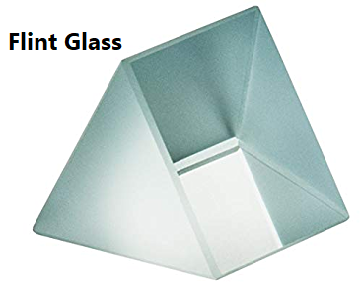
- Sodium, Potassium and Lead-Silicates are used in manufacturing of Flint Glass.
- These glasses mostly used in making electric bulbs, lenses of telescopes, microscopes, camera and prisms etc.
Water Glass: 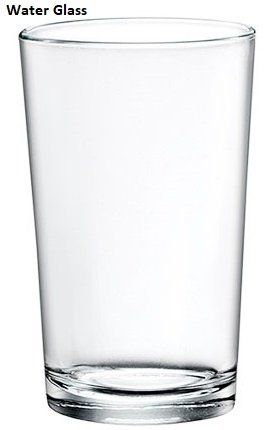
- Water glass is manufactured from the compound of sodium silicate (Na2Si03) by heating sodium carbonate and silica.
- It is widely used in kitchen as a drinking glass, tube light, bottles, equipment of laboratory.
Pyrex Glass: 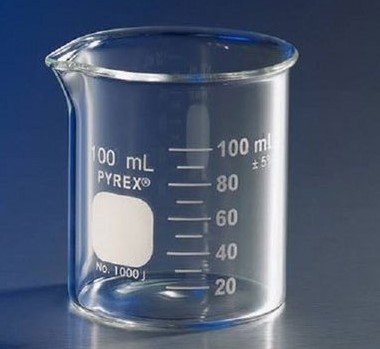
- Barium Silicate and Sodium Silicate.
- It is used in the manufacturing of heat resistance glass.
- Pyrex glass is also called borosilicate glass.
- It is widely used in microwave utensils and laboratory utensils.
Photochromatic Glass: 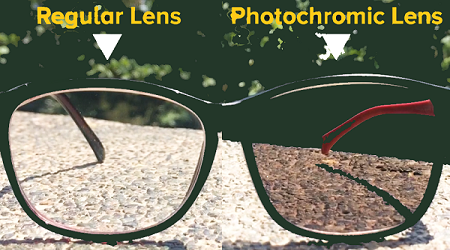
- Photochromic glasses are often made by mixing silver chloride (AgCl).
- Photochromatic glass turns black in sharp shining light thus such glasses are used as light protector and eyes reliever.
- Due to photochromatic nature (turns black in sharp shining light) this glass is used in making eye lenses and goggles.
Xena Glass:
- Xena Glass is manufactured from zinc and barium borosilicate.
- It is soft and good quality of glass.
- It is used chemical containers and equipment for the scientific purposes.
Crown Glass: 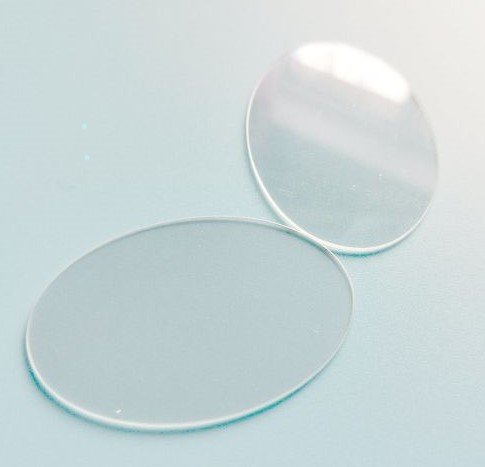
- It is composed by Potassium Oxide, Barium Oxide and Silica.
- This is a soda-lime-silica glass.
- Crown glass generally used in making lenses of eye glasses.
Crookes Glass: 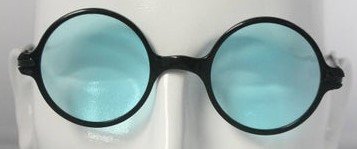
- Crookes glass manufactured by cerium oxide (CiO2).
- This glass absorbs the ultraviolet rays (UV) from the sunlight.
- It is used in making lenses of goggles.
Quartz Glass: 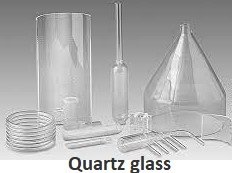
- Quartz glass is made by melting silica.
- It is used in making bulb of ultraviolet lamp, container of chemical reagents, laboratories equipment etc.
Bulletproof Glass: 
- Mostly bullet-resistant glass is made of polycarbonate, acrylic or glass-clad polycarbonate.
- Protection level depends on the glass material used, how it is manufactured, as well as its thickness.
- Bulletproof glass is used in security purpose such as windows of buildings that require such security, jewelry stores, military and private vehicles etc.
Color of Glasses:
During the process of preparation of glasses its various components or constituents (in the molten or fused state) are change (replaced) or added to make glasses become colored.
| Color of glasses | Substances used to coloring the glass |
| Green | Ferrous Oxide or Sodium Chromate. |
| Glitter red | Cuprous Oxide, Cadmium Sulphide |
| Red | Cuprous |
| Deep Blue | Cobalt Oxide |
| Fluorescent Yellow | Ferric Salt or Sodium Uranet |
| Green and green yellow | Potassium dichromate |
| Brownish black | Carbon |
For More:
If you like and think that General Science (Chemistry) topic on “Glasses: Types and Uses – Competitive Chemistry” was helpful for you, Please comment us. Your comments/suggestions would be greatly appreciated. Thank you to be here. Regards – Team SukRaj Classes.



